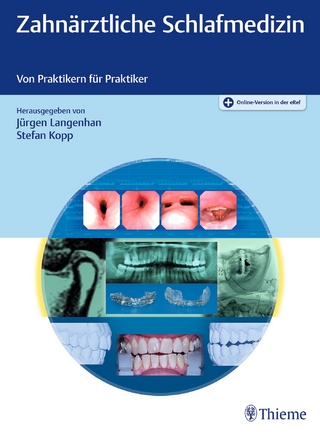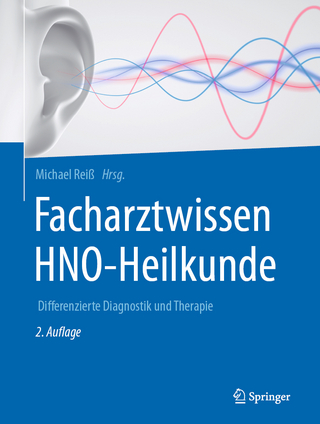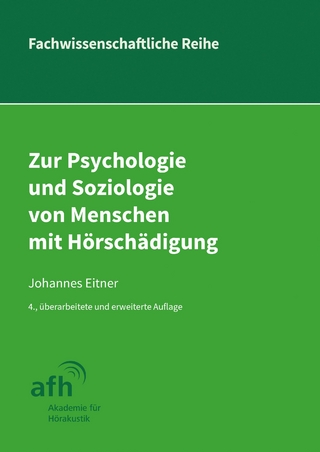
Rapid Audiogram Interpretation
Plural Publishing Inc (Verlag)
978-1-63550-115-5 (ISBN)
Rapid Audiogram Interpretation: A Clinician's Manual'' provides a methodical, step-by-step approach for interpreting audiograms. Training and experienced clinicians, as well as non-audiologists in related fields, will benefit from this unique workbook and easy-to-remember interpretation process.
The manual includes audiogram examples on a varying level of complexity (basic, intermediate, and advanced), accompanied by official interpretations, matching the specific interpretation method recommended by the authors. This specific interpretation process allows the reader to learn the method and apply it to every future audiogram interpretation, making it an invaluable resource.
Otolaryngology trainees (graduate medical students, residents, fellows) are expected to have a working knowledge of audiogram interpretation, however, few, if any, have direct lectures or mentored clinical experiences designed to provide this knowledge within their first few years of training. This resource fills that gap and provides a means for beginners to master interpretation of the audiogram. It also serves as a general review for more experienced clinicians.
Key Features:
*Includes 65 audiogram examples!
*Uses an 8-step method that can be easily learned and universally applied to future audiogram interpretations
*A searchable index by diagnosis for each audiogram aids the learner in seeing disease-specific examples
*Spiral-bound format allows readers to easily test themselves on audiogram and interpretation examples
*Blank interpretation sheets for audiogram practice)
*Includes a Glossary for quick reference of key terms
*Written by otolaryngologists and an a audiologist for comprehensive expertise and coverage
''Rapid Audiogram Interpretation'' will also be helpful for students and professionals in related fields, such as audiology, speech-language pathology, and deaf/hard of hearing education.
Lane D. Squires, MD, is an Assistant Professor of Otolaryngology, Head and Neck Surgery at the University of California-Davis. He also is a staff surgeon at the VA Northern California Health Care System in Sacramento, CA. Dr. Squires is a general otolaryngologist who provides clinical and surgical care for all aspects of the field. After graduating with honors from the University of Washington, School of Medicine, he completed his residency at UC Davis from 2011 to 2016.+++++++++++++++++++++++++++++++++++++++++++++++++++++++++++++++++++++++++++++++++++++++++++Beth Colombo, MD grew up in Massachusetts and attended Bowdoin College in Brunswick, Maine, where she graduated Summa Cum Laude with a major in Neuroscience and a minor in Gender and Women's studies. She attended the University of Massachusetts Medical School and subsequently completed her Otolaryngology residency at the University of California, Davis. She currently works as a community ENT where she focuses on the treatment of ear and sinus disorders.+++++++++++++++++++++++++++++++++++++++++++++++++++++++++++++++++++++++++++++++++++++++ Samantha McKinney, AuD, F-AAA is an audiologist at University of California, Davis Medical Center where she works with children birth to 21 years of age. Dr. McKinney completed her clinical doctorate of audiology degree from the University of North Carolina at Chapel Hill. Dr. McKinney's clinical interests involve newborn hearing screenings, pediatric diagnostics, pediatric cochlear implants, hearing aid fitting and verification, hearing assistive technologies, and optimizing early intervention strategies for children with hearing loss. Dr. McKinney grew up with hearing loss and has worn hearing aids until recently receiving a cochlear implant. She is passionate about ensuring families attain appropriate services and care with evidence-based practices and promotes self-advocacy in young children. She enjoys mentoring audiology externs, medical students, and ENT residents.
Preface
Acknowledgements
Foreword
Introduction to Our Method.
Section 1: Pure Tone Audiometry
Step 1: Assess for Hearing Loss
Step 2: Determine the Type of Hearing Loss
Step 3: Check if the Audiogram Fits a Classic Pattern
Section 2: Speech Audiometry
Step 4: Compare Speech Thresholds to Pure Tone Audiometry
Step 5: Assess Word Recognition Scores
Section 3: Immittance Testing
Step 6: Determine Tympanometry Type
Step 7: Check Ear Canal Volume
Step 8: Evaluate Acoustic Reflexes
Section 4: Audiogram Workbook
Quick Reference Guide to the Method
Basic Audiograms
Intermediate Audiograms
Advanced Audiograms
Appendix A: Audiogram Index by Diagnosis
Appendix B: Bedside Hearing Tests
Appendix C: Other Audiometric Tests
Appendix D: Common Audiologic Acronyms
Blank Interpretation Sheets
Index
| Erscheinungsdatum | 26.04.2019 |
|---|---|
| Verlagsort | San Diego |
| Sprache | englisch |
| Maße | 279 x 216 mm |
| Themenwelt | Medizin / Pharmazie ► Medizinische Fachgebiete ► HNO-Heilkunde |
| ISBN-10 | 1-63550-115-6 / 1635501156 |
| ISBN-13 | 978-1-63550-115-5 / 9781635501155 |
| Zustand | Neuware |
| Haben Sie eine Frage zum Produkt? |
aus dem Bereich


